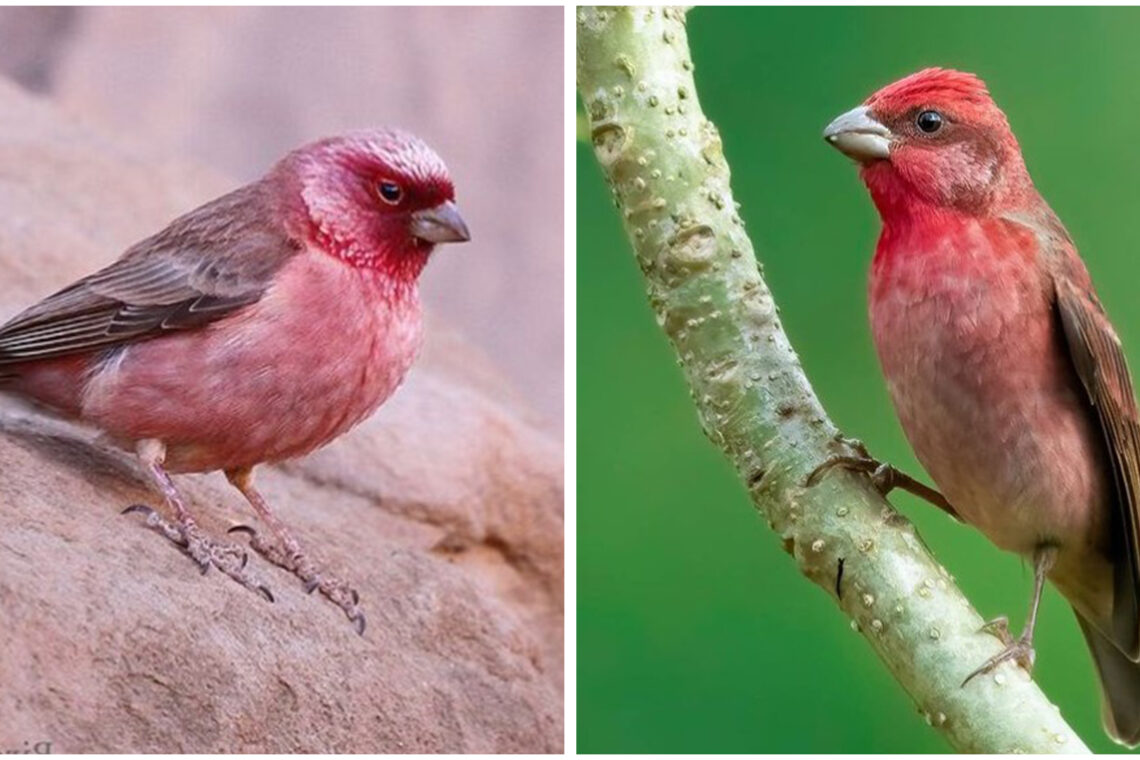
Pink is a color that captivates attention like few others, embodying a sense of charm and vibrancy. While it has long been associated with femininity, its allure transcends gender boundaries. People from various backgrounds and lifestyles have embraced pink throughout history, showcasing its universal appeal.
One fascinating representation of this color in the natural world can be found in the rosefinch, a group of birds known for their striking pink plumage. These birds have been celebrated for their vivid colors, which vary among different species. Research suggests there are between 25 and 30 recognized species of rosefinch, each showcasing its unique shades and patterns. This diversity in coloration is part of what makes them so remarkable and beloved by birdwatchers and nature enthusiasts alike.
Among the many species, the Sinai rosefinch stands out for its vibrant hue. This bird is reminiscent of bubblegum, with a bright pink appearance that catches the eye and brightens its surroundings. The Sinai rosefinch is not only beautiful but also serves as a symbol of the rich avian life found in the regions it inhabits.
Other species exhibit subtler tones, yet they possess their own distinctive beauty. The common rosefinch, for example, displays a more muted pink that blends harmoniously with its environment, offering a softer yet equally captivating aesthetic. Each species has evolved to adapt to its habitat, showcasing a remarkable array of colors and patterns that contribute to the biodiversity of the areas they occupy.
Consider the streaked rosefinch, which features delicate streaks across its feathers that add depth and texture to its appearance. The interplay of light on its plumage creates a stunning visual display, further highlighting the elegance of these birds. Similarly, the pink-browed rosefinch showcases a delightful contrast between its pink brow and the rest of its body, making it an intriguing sight for those lucky enough to spot it in the wild.
The great rosefinch, with its larger size and vivid coloration, commands attention wherever it goes. Its presence is a reminder of the beauty of nature and the diverse ecosystems that support such vibrant wildlife. Another captivating species is the Chinese white-browed rosefinch, known for its robust build and striking coloration. Males display a pink crown that contrasts beautifully with pale pink feathers, creating an eye-catching look that is hard to miss.
In the Himalayas, the Himalayan white-browed rosefinch thrives in its mountainous habitat. This bird exhibits a unique charm, with plumage that resonates with the stunning landscapes of the region. The rugged terrain and high altitudes contribute to the majestic aura of these birds, making them a sought-after sight for birdwatchers and nature lovers.
The pale rosefinch, another remarkable species, embodies a gentler shade of pink. Its delicate appearance adds a sense of grace to its environment, reminding observers of the intricate beauty found in nature’s palette. The variety among rosefinches highlights the adaptability and resilience of these birds, showcasing how evolution shapes the physical traits of species in response to their habitats.
View this post on Instagram
A post shared by ʙᴇᴀᴜᴛɪғᴜʟ ᴛʜɪɴɢs ᴏғ ᴛʜᴇ ᴡᴏʀʟᴅ (@beautifulthings_of_theworld)
Another fascinating member of this family is the dark-rumped rosefinch, which features a combination of darker shades and vibrant pink that creates a unique and striking contrast. This bird serves as a testament to the diversity of rosefinches, further emphasizing the array of colors and patterns found in nature. Each rosefinch species contributes to a broader understanding of avian beauty and ecological balance.
The symbolism of pink, often associated with love and compassion, is reflected in the lives of these birds. Their vibrant colors not only make them stand out but also play a role in communication and mating rituals. Male rosefinches often use their striking plumage to attract potential mates, showcasing their health and vitality through their appearance. This aspect of their behavior adds a layer of complexity to their beauty, as it intertwines with the themes of survival and reproduction.
In many cultures, the sight of these pink-feathered birds evokes a sense of joy and wonder. Their presence in natural settings can uplift spirits and inspire creativity. Observing rosefinches in their natural habitat is a reminder of the interconnectedness of life and the importance of preserving biodiversity. As urbanization continues to encroach on natural spaces, the plight of these and other birds becomes more pronounced, highlighting the urgent need for conservation efforts.
As we reflect on the beauty of rosefinches, it’s essential to appreciate the broader ecological context in which they exist. Their presence in various environments contributes to the overall health of ecosystems, serving as indicators of environmental quality. Protecting their habitats ensures that future generations can also experience the joy of observing these remarkable birds.
Moreover, the fascination with rosefinches extends beyond mere admiration; it encourages a deeper connection with nature. Birdwatching and studying these species can foster a greater appreciation for wildlife and inspire individuals to engage in conservation initiatives. Whether it’s through documenting sightings, participating in local birding clubs, or advocating for habitat protection, each action contributes to the preservation of these stunning creatures.
In conclusion, the captivating pink hues of rosefinches serve as a reminder of nature’s beauty and diversity. These birds, with their vibrant colors and unique adaptations, play an essential role in our understanding of avian life. By celebrating the rosefinch and advocating for their conservation, we not only protect these enchanting birds but also the rich tapestry of life they represent. The world of rosefinches invites us to explore, appreciate, and ultimately safeguard the natural wonders that surround us.